 W
WAransas National Wildlife Refuge is a 115,324 acre (466.7 km2) protected area situated on the southwest side of San Antonio Bay along the Gulf Coast of the U.S. state of Texas. It is located in parts of Aransas, Refugio, and Calhoun counties. It is situated on the southwest side of the San Antonio Bay, formed by the mouth of the Guadalupe River. It also includes nearly the entirety of Matagorda Island, a 38-mile barrier island. The Aransas National Wildlife Refuge was established by Executive Order 7784 on 31 December 1937 by President Franklin D. Roosevelt as the Aransas Migratory Waterfowl Refuge as a refuge and breeding ground for migratory birds and other wildlife. Roosevelt issued a proclamation in 1940 changing the name to the Aransas National Wildlife Refuge.
 W
WArivaca Creek is a small valley stream in southern Pima County, Arizona, that is approximately 5.5 miles (8.9 km) long from its origin in Arivaca Valley to its confluence with the Brawley Wash stream system. As a seasonal stream, Arivaca Creek is perennial for only about two miles most years and experiences its greatest stream-flow during winter and the summer Monsoon season.
 W
WBackus Creek State Game Area is a state game area within Roscommon County in the U.S. state of Michigan. It incorporates 4,379 acres (1,772 ha) of hunting, recreational, and protected wildlife and wetland areas of rural Backus Township and Higgins Township. Backus Creek State Game Area is administered by the Michigan Department of Natural Resources (MDNR).
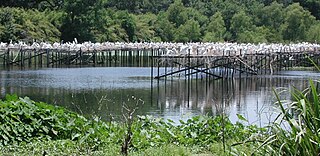 W
WBird City is a private wildfowl refuge or bird sanctuary located on Avery Island in coastal Iberia Parish, Louisiana.
 W
WThe Cabin Lake Guard Station is a Forest Service compound consisting of six simple rustic buildings located in the Deschutes National Forest in central Oregon. It was originally built as a district ranger station for the Fort Rock Ranger District. It was later converted to a summer guard station. The guard station is now closed, but the adjacent campground is open. While still very remote, it is a popular location for bird watching and nature photography. The Cabin Lake Guard Station is listed on the National Register of Historic Places.
 W
WCape May is a peninsula and island ; the southern tip of the island is the southernmost point of the U.S. state of New Jersey. The peninsula resides in Cape May County and runs southwards from the New Jersey mainland, separating Delaware Bay from the Atlantic Ocean. The cape is named for Cornelius Jacobsen Mey, a Dutch explorer who was working for the Dutch East India Company.
 W
WThe Dry Tortugas are a small group of islands, located in the Gulf of Mexico at the end of the Florida Keys, United States, about 67 miles (108 km) west of Key West, and 37 miles (60 km) west of the Marquesas Keys, the closest islands. Still farther west is the Tortugas Bank, which is submerged. The first Europeans to discover the islands were the Spanish in 1513, led by explorer Juan Ponce de León. The archipelago's name derives from the lack of fresh water springs, and the presence of turtles. They are an unincorporated area of Monroe County, Florida, and belong to the Lower Keys Census County Division. With their surrounding waters, they constitute the Dry Tortugas National Park.
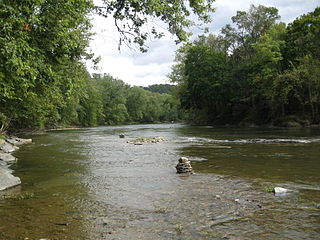 W
WFishing Creek is a 29.98-mile (48.25 km) long tributary of the Susquehanna River in Columbia County, Pennsylvania, in the United States. It joins the Susquehanna River near the census-designated place of Rupert and the town of Bloomsburg. The watershed has an area of 385 square miles (1,000 km2).
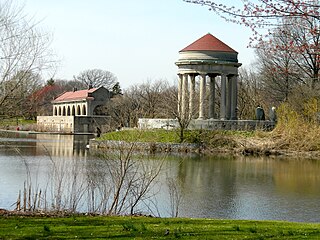 W
WFranklin Delano Roosevelt (FDR) Park is an aesthetically designed park located along the Delaware River in the southernmost point of South Philadelphia, Pennsylvania, comprising some 348 acres (1.41 km2) which includes a 146-acre (0.59 km2) golf course, about 125 acres (0.51 km2) of buildings, roadways, pathways for walking, landscaped architecture, and a variety of picnic and recreation areas placed within about 77 acres (310,000 m2) of natural lands including ponds and lagoons.
 W
WThe Colonial Coast Birding Trail of Georgia is a wildlife trail that is not a really a "trail", but a series of 18 sites that have been chosen for their excellent birdwatching opportunities.
 W
WThe Great Texas Coastal Birding Trail is a state-designated system of trails, bird sanctuaries, and nature preserves along the entire length of the Texas Gulf Coast in the United States. As the state of Texas hosts more bird species than any other state in the U.S. the trail system offers some of the most unusual opportunities for bird-watching in the world. The "trail" is actually 43 separate hiking and driving trails that include 308 birding sites. The sites themselves feature a variety of viewing opportunities with boardwalks, observation decks, and other amenities. The trails boast more than 450 bird species. The trail system is managed by the Texas Parks and Wildlife Department as part of the Great Texas Wildlife Trails which also include the Heart of Texas Wildlife Trail, the Panhandle Plains Wildlife Trail, and the Prairies and Pineywoods Wildlife Trail.
 W
WThe Hans and Pat Suter Wildlife Refuge is a wildlife refuge in Corpus Christi, Texas. The Refuge is located on the western shore of Oso Bay, on Ennis Joslin Road, near the Pharaoh Valley subdivision.
 W
WHawk Ridge is a nature reserve and bird observatory renowned for its autumnal raptor migrations. The Audubon Society describes Hawk Ridge as "one of the premier sites in North America". P. B. Hofslund, one of the first ornithologists to conduct research there, pronounced it "one of the great hawk flyways of the world". Twenty-thousand birdwatchers visit Hawk Ridge each year to view the migration. It is an important site for ornithological research.
 W
WThe Houghton Lake Flats Flooding State Wildlife Management Area is a protected wildlife area located in rural Lake Township within Roscommon County in the U.S. state of Michigan. The wildlife management area incorporates 1,830 acres (7.41 km2) of artificially restored marsh and wetlands just west of Houghton Lake.
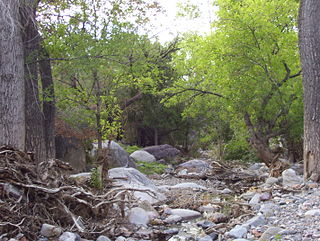 W
WMadera Canyon is a canyon in the northwestern face of the Santa Rita Mountains, twenty-five miles southeast of Tucson, Arizona. As part of the Coronado National Forest, Madera Canyon has campsites, picnic areas, and miles of hiking trails. The canyon is also used as a resting place for migrating birds, and it is thus known as a premier birdwatching area. Madera Canyon was originally named White House Canyon, after a prominent white adobe house was built there in the late 19th century. The canyon was renamed sometime in the early 1900s, although some locals still use the original name.
 W
WThe Maple River State Game Area is a protected state game area in the U.S. state of Michigan. Located in the central region of the Lower Peninsula, it encompasses approximately 9,252 acres (3,744 ha) in segmented portions within Clinton, Gratiot, and Ionia counties. Governed by the Michigan Department of Natural Resources, the area is considered the state's longest contiguous wetland complex.
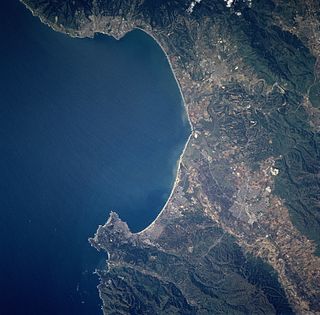 W
WMonterey Bay is a bay of the Pacific Ocean located on the coast of the U.S. state of California. The bay is south of the major cities of San Francisco and San Jose. Santa Cruz is located at the north end of the bay, and Monterey is on the Monterey Peninsula at the south end. The "Monterey Bay Area" is a local colloquialism sometimes used to describe the whole of the Central Coast communities of Santa Cruz and Monterey counties.
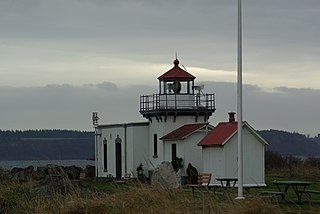 W
WPoint No Point is an outcropping of land on the northeast point of the Kitsap Peninsula in Washington, the United States. It was the location of the signing of the Point No Point Treaty and is the site of the Point No Point Light. It was named by Charles Wilkes during the United States Exploring Expedition of Puget Sound in 1841.
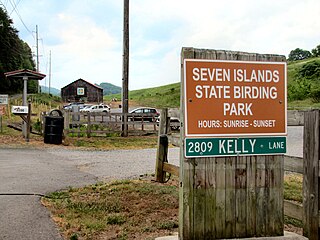 W
WSeven Islands State Birding Park is a state park in Knox County, Tennessee located east of Knoxville near Kodak along the French Broad River. The park was created for birdwatching. The diverse grassland landscapes and the river create a habitat for more than 180 species of birds.